

The content is carefully researched and tested and has been implemented in several schools. More than 7000 kids are studying the curriculum in the country as of now.
We have created new, innovative and fun music resources for the Sangeet4All curriculum. We divide the resources into classroom resources and individual student resources. Midyear, the teachers receive a specialized workshop to teach the swartarang and bansi.
Saskia Rao de Haas developed the Sangeet4All curriculum to that ensures that all children in India have access to high quality music education that is India specific. Sangeet4All combines the age-old traditions of Indian music with internationally developed teaching methodology and pedagogy. A holistic and multi-sensory approach to music education is adapted to Indian music, sensibilities and culture. Educators, teachers, parents and children alike enjoy the innovative and attractive resources unique developed for Sangeet4All.

Teacher’s handbook gives a general outline of the philosophy of Sangeet4All program. The teachers apart from the workshops, and the facilitator visits by Sangeet4All, can use this short book as a reference throughout the year.The success of a program
Lesson plans give a detailed lesson with time management, material and aims of the lesson. It also gives a per lesson assessment in an easy to use format for the teacher. This ensures an effective continuous and comprehensive evaluation. We provide separate lesson plans for each grade.
The success of a program is determined by the users- the music teachers! Sangeet4All empowers the music teacher by giving tools to enjoy the process of teaching music. These tools are: a structured lesson through the lesson plans, online teacher training and workshops and resources.
In India music teachers are generally performing musicians. Not music educators. Music teachers generally lack the skillsets required to teach music in school because music education is still not generally recognized as a separate profession from music performer. Sangeet4All fills the need to create music educators with a detailed professional development programme.

Interactive workshops to introduce the resources and principles of S4A and provide professional growth opportunities for music educators.

Special orientation for parents and class teachers on how they can carry the programme forward.

We organize interactive workshops to introduce the resources and principles of S4A. We also provide professional growth opportunities for music educators through the various steps of the implementation program.

The facilitator’s job is to take the music teachers by the hand and help them during the process of becoming a music educator in their schools. A S4A facilitator provides both on-site visits for implementation of S4A, hands-on teacher training, team building, as well as a leader in teacher and student evaluations and assessments

We use an ‘assessment for learning’ that takes into account the direct benefits for the students in the future rather than a ‘summative assessment’. The easy to use and detailed assessment system helps the teacher and student to get a detailed insight in their musical development. We identified 7 pillars of music that the children get assessed on.

All music teachers associated with S4A get a certificate at the end of teaching the units/completing the training course. There are various levels of the teacher training course spanning over 5 years.
We have created new, innovative and fun music resources for the Sangeet4All curriculum. We divide the resources into classroom resources and individual student resources. Midyear, the teachers receive a specialized workshop to teach the swartarang and bansi.
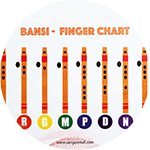
The posters serve for easy identification of musical material (i.e. instruments, note names, sargam, rhythm) and creating a happy musical environment in the classroom.

We have composed and recorded background scores with the songs and music to accompany the flashcards and storytelling. We created these various recordings for easy implementation and teaching and to enhance listening, coordination and fun!

These unique Sangeet4All games are designed for embodied and multi-media music learning. Children learn musical concepts through games. Music quartet, Sargam Stapu, Taan Twister and Music memory are the names of some of these innovative games.

The Sangeet4All song repertoire consists of fun and age appropriate songs, many of which are originally created for Sangeet4All. Various poems by Hindi poet Shyam Banerjee, traditional Hindi and English poems set to music, action songs, folk songs from various regions and classical ragas together form the rich repertoire of the Sangeet4All programme. Of each song we give recordings and background tracks with the programme.
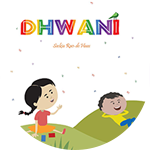
The activity books are created to be a link between the classroom and home. Activities, traditional musical stories, songs, games and illustrations are unique to the Sangeet4All curriculum. The various units (Dhwani, Vadya,Raga,Deshi and Shastra) teaches the child in-depth knowledge of classical music in a playful manner.

Bansi is a straight flute for the primary grades. For hygiene and safety each student has a personal Bansi
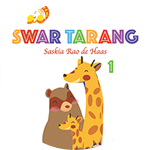
The music literacy books use a unique sargam based colour coded notations that even the youngest can follow and can even help children in becoming more fluent readers. They go together with the instruments Bansi (grade 2+) and swartarang (age 3½+)

An integral part of the Sangeet4All program is playing instruments and making music together. For this purpose, we offer a collection of classroom instruments and individual instruments. Midyear, the teachers receive a specialized workshop to teach classroom percussion, the swartarang and bansi. The swartarang is an instrument created by Saskia Rao de Haas to teach young children a musical instrument. The bansi is a bamboo flute that is used in a unique way in the Sangeet4All curriculum. The classroom percussion kit teach children the world of rhythm and help them to create music together in a rhythm orchestra. All these instruments set children up for success in their earliest endeavors to learn to play an instrument and teach them music literacy. Children also engage in making their own instruments to instill a relationship with them for life.
From birth, children learn how to speak, socialize, move, and interact with the world through non-formal learning. We would expect children to learn these basic functional actions through observation and imitation in a relaxed and immersive environment in which s/he is free to act and create.
Breaking this down into individual parts gives us three main factors:
1. Observation & imitation 2. Relaxed & immersive environment 3. Freedom to act & create
The S4A curriculum has three main strands: Sing. Play. Learn. These strands recreate the natural and free environment in which children learn basic functional behaviors from birth.
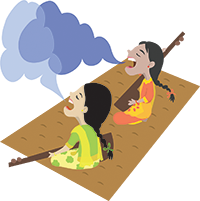
In S4A we believe that proper vocal training from a young age builds the following essential tools for the child. When we train children from day 1 correct use of voice that does not strain the vocal chords, we build a strong foundation for singing. Interestingly, this strand stands for a lot more then singing songs.
Principal : Musical foundation
Objective : Establish an understanding and appreciation for Indian classical music heritage in a way that stimulates creativity and instills pride.
Principal : Self-awareness
Objective : Building awareness of the voice and the body by identifying breath.
Principal : Group cohesion
Objective : Strengthening cooperation and turn-taking skills through group singing activities.
Principal : Confidence
Objective : Building self-confidence and self-expression through group and solo singing opportunities.

Special orientation for parents and class teachers on how they can carry the programme forward. Through play is how we all learn best. When we can teach children through games and fun activities they will build a bond to music that will make them want to come back to the subject every day.
Principal : Exploring instruments
Objective :
Train fine motor skills and develop musical skills.
Principal : Auxiliary percussion
Objective : Develop playing unison and sense of rhythm.

This strand is based on the belief that all children want to learn. From the day we are born, every day we learn. Music helps children in building a positive attitude towards learning.
Principal : Multi-sensory learning
Objective : Develop understanding of concepts respecting the way young children learn
Principal : Simple songs for concept building
Objective : Through simple songs we teach the note names, rhythmic concepts, call and response.
Principal : Experiential learning for concept buiding
Objective : To understand ‘high’ or ‘low’ sounds, sound colour and creating associations with various ragas.
Principal : Assessment activities and questions
Objective : Application of learned concepts and assessment if all children have understood concepts.
Each methodology around the world formed in response to the social and political demands of their time when the cultural integrity of each country was at stake. Saskia Rao de Haas developed Sangeet4All (S4A) to answer the need of the hour in India. S4A, in line with the guidance of the CBSE for the primary performing arts education, draws from the main philosophies and methods of music and arts education: Dalchroze Eurythmics, El Sistema, Kodaly, Montessori, Orff, Waldorf, & Suzuki. These focus on the development of the intellectual, social, and emotional sides of the child. S4A stands apart in how it adapts principles of these methodologies to India’s cultural and musical content.
Below are descriptions of each methodology followed by S4A curriculum adaptations:

Ancient Indian scriptures promote the body as the original musical instrument. We maintain this principle and use movement to develop an internal sense of music by pairing Indian Sargam and basic Indian bols with body movements. The children learn alankars and musical phrases through this system
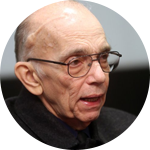
S4A truly believes that music is every child’s birthright and that children benefit from developing their creative expression through music education. S4A also promotes access to cultural heritage by founding the education in Indian classical music and culture. Other beliefs we share with the El Sistema is the understanding of the self-directed discipline and social cohesion good music education brings to a child and his/her family.
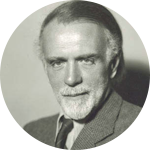
S4A agrees that we first need to understand our own music before approaching other styles. Indian Sargam is used to vocalize notes and Indian classical and folk traditions are used for content. Our original songs pay close attention to age-appropriate thematic content, musical content, and vocal production. We develop a complete set of resource tools to provide quality teacher training, as well as hold workshops, online training and evaluations in line with the Kodaly program. The sargam hand movements are based on the system developed by Kodaly. The rhythmic language Kodaly used is similar to the South Indian rhythmic language that we promote.

S4A’s first unit focuses on building an awareness to sound and rhythm in the body, in the surroundings, and in daily life by incorporating movement, story writing, and visual art into lessons, through nature-themed content, and by creating a safe environment where children feel comfortable to take risks and express themselves freely.

S4A believes that music is a natural part of being human. Speech, rhythm, and movement are performed simultaneously in musical activities using Indian bols and Sargam, developing musical literacy. Encouragement of the creative input of children, recognizing students’ learning, use of instruments to explore sound and participate in musical storytelling as well as play in ensembles and develop fine motor skills, and the process-based approach are all important elements of S4A. S4A also teaches classroom instruments, small percussion, the swartarang and bansi, that are based on the philosophy of the Orff musical instruments, but adapted to an Indian musical context.
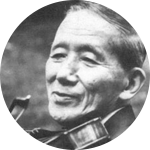
S4A promotes the importance of parental involvement. In the activity books there are notes to the parents as well as teachers. When we work together with the parent and when the parent can create the right musical environment at 3home is when learning is optimal for the child.

S4A encourages general classroom teachers to integrate music in their classroom in the way Rudolf Steiner approached arts. S4A encourages the different arts in the curriculum by including activities that combine music with movement, drawing, social sciences, number awareness and stories.
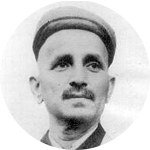
Bhatkhande was an Indian musicologist and music educator who was responsible for introducing the ‘Thaat system’, popularizing the usage of organized repertoire in Indian music in his collection Kramik Pusatak Malika. He formulated a methodology to teach each raga. In Sangeet4All we make use of the steps of teaching a raga: the Thaat system, the avaroha and aroha, time of day and some of the traditional compositions of the Kramik Pustak Malika.
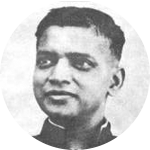
D.V. Paluskar was a great vocalist, musicologist and music educator who was, with Bhatkhande and Omkarnath Thakur, instrumental in the introduction of the music schools for Hindustani music. He also created pre-raga repertoire that suited the slightly younger learner collecting songs from various parts of India and codifying them in his music schools. We make use of his unique repertoire collection.


Students Empowered

Years of Knowledge & Research
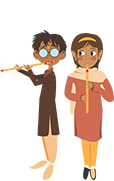
Schools Partnered Globally
 To book an appointment with one of our experts Click here to book an appointment with one of our experts
To book an appointment with one of our experts Click here to book an appointment with one of our experts